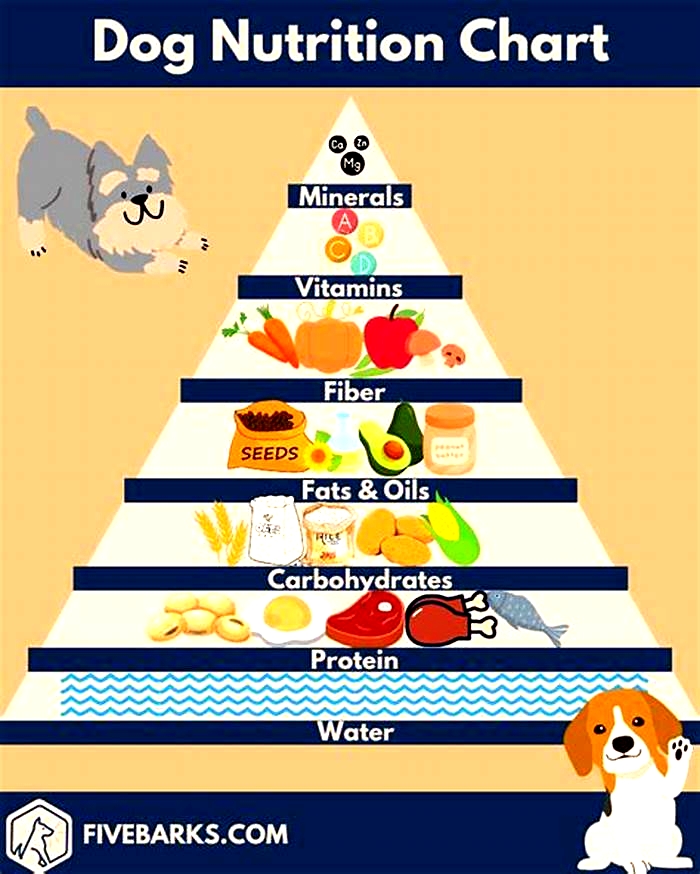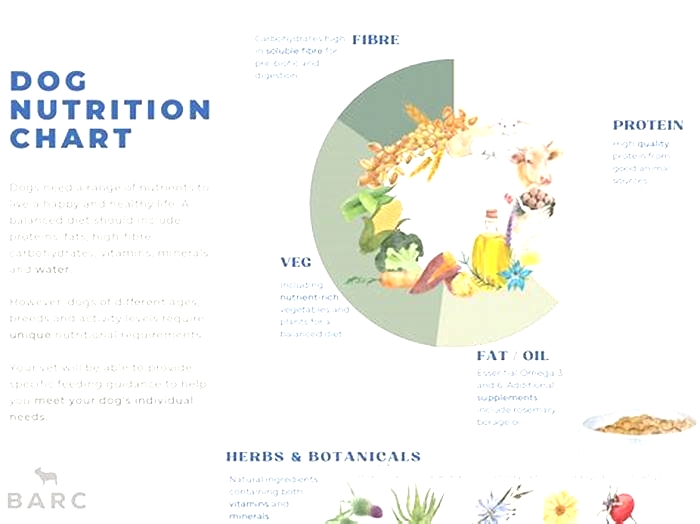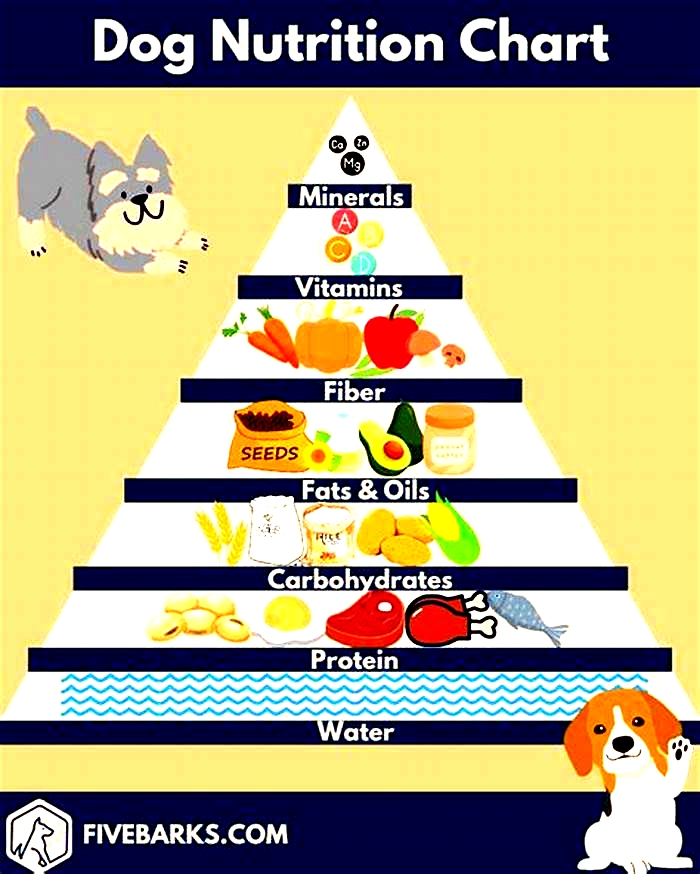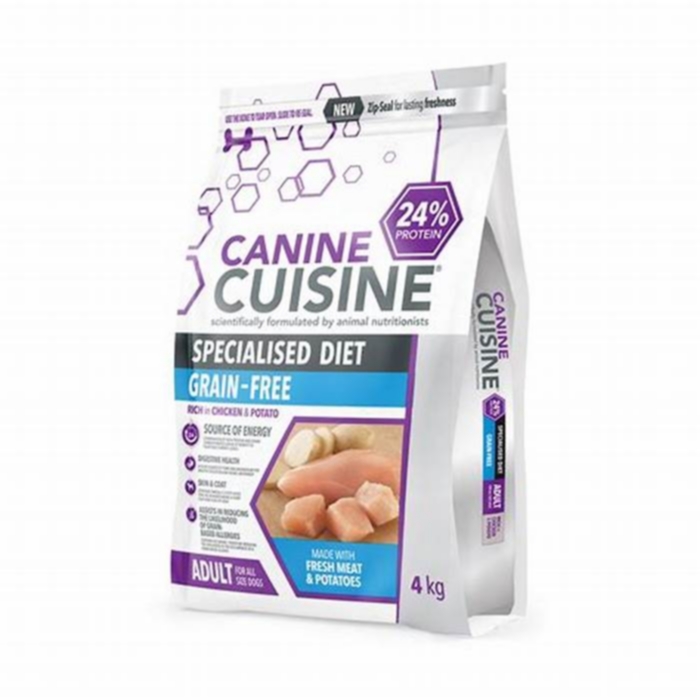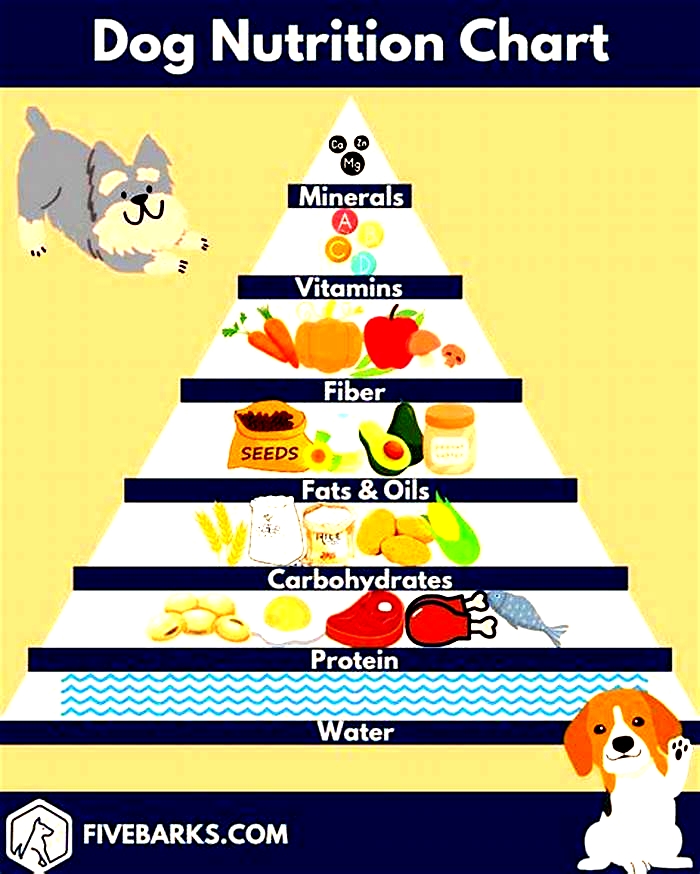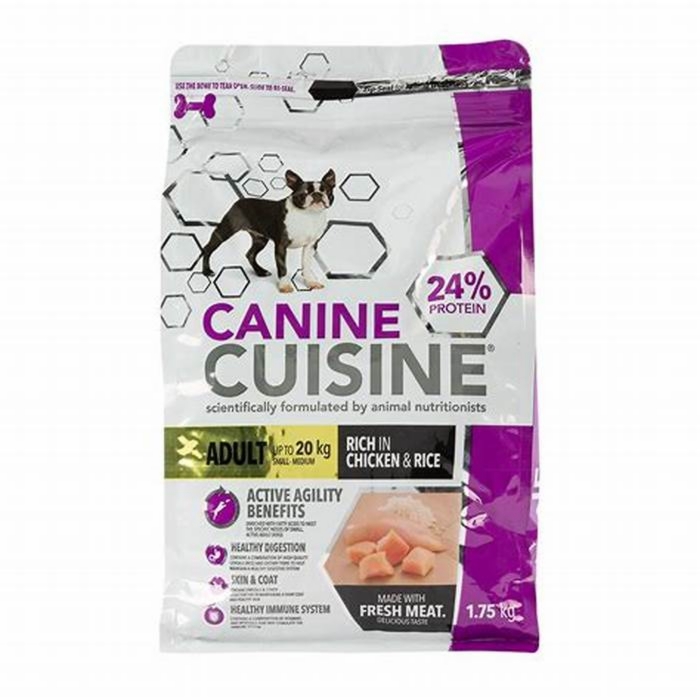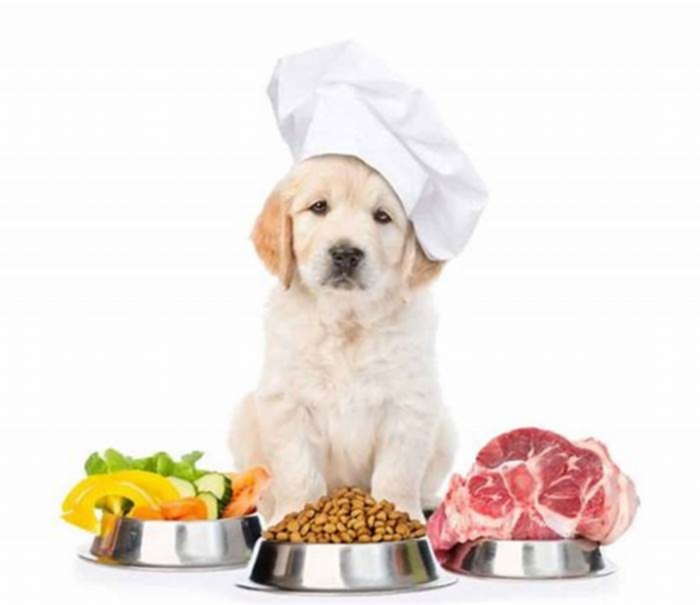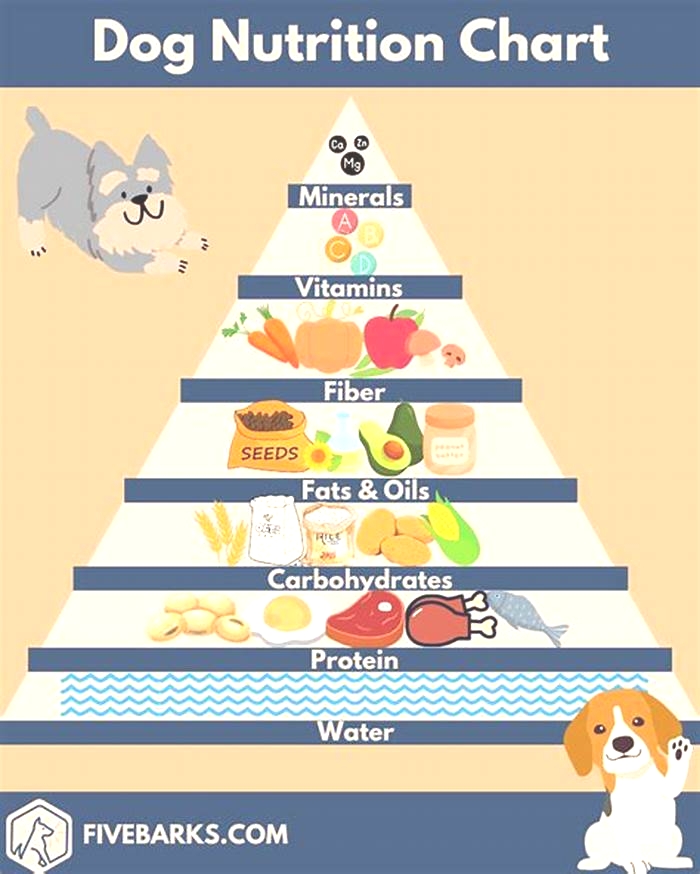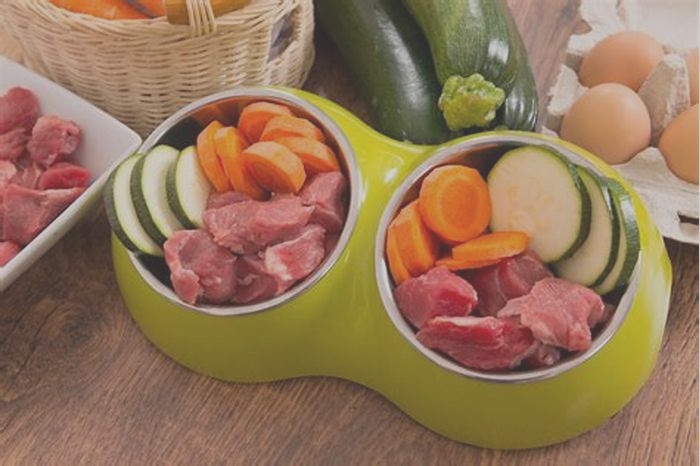Curated Canine Nutrition Providing Your Dog with Specialty Diets

Common ways we mess up our pups nutrition
When you love your dog, you may feel the urge to spoil them with treats or come up with elaborate meal recipes. But some of the feeding choices we make out of love can turn into big mistakes depriving our dogs of necessary nutrients, overdoing fats or leaning too heavily on the magic of chicken and rice (which is supposed to be a temporary diet for upset digestive tracts).
Top tips for dog diets
- Feed a commercial diet that is certified as providing complete and balanced nutrition for your dogs life stage, or work with a board-certified veterinary nutritionist to plan a home-prepared diet that matches your dogs needs.
- Be conservative with treats. If you love giving your dog lots of little tidbits throughout the day, use low-calorie, low-fat snacks such as carrots or snap peas, or set aside part of their daily meals for treats.
- Make all diet changes gradually, and consider giving a probiotic during this transition period.
- Schedule an appointment with your veterinarian if your dog has chronic diarrhea or stomach upset to determine if there are other underlying causes.
Too many treats
When asked about where things often go awry with doggy diets, Dr. Joseph J. Wakshlag, section chief and professor of clinical nutrition, immediately responded, Too many treats!
It is common, even when the dog is on a commercial diet, that folks still like to feed treats or table scraps, Wakshlag says. Treats should be limited to no more than 15% of the daily calorie intake since these are often not complete and balanced foods, which may throw off nutrient intake.
Many veterinary nutritionists recommend limiting your dogs calories from treats to 10% of their total diet, especially if you are working on a weight-loss program. Even though many of us feel like we only give our dogs occasional table scraps, those bites add up quickly.
I was involved in a study looking at table-scrap feeding, or human foods to be more precise, and the average calories from these sources was about 20% of calories for the average dog, which is a bit too much, Wakshlag says. Veggies are often fine because they are low in calories, while the pizza crust, burger bites and fries are just way too high in calories, and can really lead to obesity and subpar nutrient intake.
The good news is that there are easy ways to get your dogs diet back in balance without denying them treats and snacks. Instead of feeding random food scraps, use part of your dogs primary diet as treats. Set aside part of each meal to use for training and random snacks. This is helpful both for weight-loss management and to ensure that your dog is eating a balanced diet.
Another option is to use healthy, low-calorie items as treats. Carrots, broccoli and snap peas are three examples that many dogs love.
Hazards of home-cooking
Home-prepared diets for dogs are increasing in popularity, but many veterinary nutritionists advise caution. It is critical to use a recipe that is deemed complete and balanced to make sure that your dog is getting everything that they need. For dogs with health conditions, a custom diet designed by a veterinary nutritionist is often the best plan.
If people are feeding home-prepared diets, this can be a problem, since there are a number of nutrients that are often deficient like calcium, B12, zinc, magnesium, etc., which can lead to subclinical deficiencies, Wakshlag says. The most egregious deficiency is usually calcium, which can lead to pathologic fractures in puppies and osteopenia with a risk of fracture.
But your dog can have their ground turkey cake and eat it too. If considering a home-cooked diet for your dog, ask your veterinarian to evaluate it for nutritional adequacy. Its very important to use vitamin and mineral mixes designed for home-prepared diets when feeding dogs, particularly if using primarily a meat-based diet plan, Wakshlag says.
Too much of a good thing
Our dogs love meats and fats, but overly rich foods dont always love them back. Overindulging can irritate your dogs pancreas and cause pancreatitis.
Pancreatitis is an extremely painful condition characterized by nausea, vomiting, lethargy, poor appetite, abdominal pain, diarrhea and fever. In severe cases, it can be fatal. Pancreatitis is treated with pain medications, anti-nausea medications and intravenous fluids. Most dogs who have survived pancreatitis have to stay on a strict, low-fat and low-protein diet for the rest of their lives to prevent recurrence.
Prevention is the best medicine when it comes to pancreatitis. Only give your dog small amounts of rich or fatty foods, especially if they have a history of having a sensitive GI tract. An occasional marrow bone is likely safe, but avoid making them a regular snack. (Also keep in mind that dogs can crack or break their teeth when chewing on these bones, or get hurt from splinters that break off and become lodged in their throat).
Long-term bland diets
Plain, boiled chicken and rice can save the day when your dog has diarrhea. Lean, cooked hamburger and cooked pasta are two other great options when your dog is sick and needs a bland diet to soothe their GI tract.
However, neither of these diets are balanced, and they are not safe to feed long-term because they have an incomplete nutritional profile.
If you find yourself whipping up a bland diet for your dog on a regular basis, then they may have a health condition more serious than a simple case of diarrhea. Some possible underlying causes include intestinal parasites, irritable bowel syndrome (IBS), pancreatitis, food intolerance, exocrine pancreatic insufficiency (EPI), Addisons disease, liver and kidney failure, food allergies or even cancer. The bland diet will help temporarily with your dogs discomfort, but wont resolve the underlying issue and may even make it worse over time.
Schedule a veterinary appointment to discuss your dogs symptoms and complete testing to figure out why your dog may still need a bland diet. Bloodwork, plus a fecal exam to check for parasites, is a great place to start. If those tests dont provide clear answers, your veterinarian may recommend additional blood tests, an X-ray or ultrasound, allergy testing or endoscopy.
Switching too quickly
If you need to change your dogs diet, do it gradually. Start by feeding 75% of the old diet mixed with 25% of the new diet. The next day, feed 50% of each diet, then on the third day feed 25% old and 75% new. This 4-day transition works for most dogs, but dogs with sensitive stomachs may need a longer, more gradual swap.
If you end up doing a sudden diet change, your dog may have some diarrhea because they arent used to the new diet yet. This is usually temporary and will resolve without treatment, but can be unpleasant for both of you. If the diarrhea lasts more than a day or two, or if your dog has other symptoms, call your veterinarian to get some probiotics or anti-diarrhea medications to help ease the transition.
This article has been reprinted with permission from the Cornell University College of Veterinary Medicines DogWatch newsletter, published by Belvoir Media Group. When you become a member of the Riney Canine Health Center, you will receive a free subscription to DogWatch.
Nutrition for Active, Working and Sporting Dogs
Hill, R. C. (2004, July 31). Feeding dogs for agility [Presentation]. University of Florida College of Veterinary Medicine 8th Annual Dog Owners & Breeders Symposium, Gainesville, FL, United States. http://www.rrcus.org/health/pdf/Feeding_For_Agility.pdf
Shmalberg, J. (2014). Canine performance & rehabilitative nutrition part 1: Canine performance nutrition.Todays Veterinary Practice, 4(6), 7276.https://todaysveterinarypractice.com/acvn-nutrition-notes-canine-performance-nutrition/
Toll, P. W., Gillette, R. L., & Hand, M. S. (2010). Feeding working and sporting dogs. In M. S. Hand, C. D. Thatcher, R. L. Remillard, P. Roudebush & B. J. Novotny (Eds.),Smallanimal clinical nutrition(5th ed., pp. 321358).Mark Morris Institute.
Wakshlag, J., &Shmalberg, J. (2014). Nutrition for working and service dogs.Veterinary Clinics of North America: Small Animal Practice, 44(4), 719740.doi: 10.1016/j.cvsm.2014.03.008
Zanghi, B. M., Robbins, P. J., Ramos, M. T., & Otto, C. M. (2018). Working dogs drinking a nutrient-enriched water maintain cooler body temperature and improved pulse rate recovery after exercise.Frontiers in Veterinary Science, 5, Article 202.doi: 10.3389/fvets.2018.00202
Evaluate your dog's activity
Cornellhas long been the leader in canine nutrition for working dogs.
Arleigh J. Reynolds '83, D.V.M. '86, Ph.D. '92, professor of clinical nutrition at the University of Alaska - Fairbanks,did groundbreaking work in sled-dog nutrition. Now,Joseph J. Wakshlag, D.V.M. '98, Ph.D. '05, professor of clinical nutrition and sports medicine and rehabilitation, is continuing to advance our expertise.
He says that not all performance events are equal in terms of the type of demands they put on your dog. Wakshlagusesa three-tier system for determining the nutritional needs of your sports dog:
- Endurance dogs.For true endurance dogs, like the racing sled dogs, a diet high in fat is important. Up to 35% of the diet (dry matter basis) should be fat, with 500-600 calories per cup of food. These dogs do not need this kind of food all year, however. During their off season,the intense diet can taper down. Then, as competition season approaches and training increases, food should be shiftedto the high-fat diet. 4-6 weeks is a good timeline for acclimating your dog's body to the working diet.
- Medium-activity dogs. Medium-level activities include hunting dogs, working foxhounds, open field herdingdogsand search-and-rescue dogs. Post-exercise carbohydrate repletion during competition is important, saysWakshlag. These dogs need more fat and caloric density, especially building up to competitions or events.
- A subset of thesedogs arearena hunters, arena herdersand other tracking dogs. For the most part, these dogs could be fed more likesprinterssince they dont work for long periods of time, but they still need fat to build up for competition.
- Sprinters. Sprinters dogs working on agility, dock diving, flyballand lure need diets heavier oncarbohydratesand lighter onfats. For them, 40-50% carbohydrates (dry matter basis) and 12-17% fatis appropriate, with 300-400 calories per cup of food. These dogs should have small meals the day before an event and receive carbohydrates post activity, especially if they do multiple short events in one day.
Canine energy use
Dogs draw on three systems for energy:
- Immediate energy for 5-20 seconds, which comes from burning adenosine triphosphate (ATP).
- Glycolytic energy for20-120 seconds(this system involves the anaerobic breakdown of glucose).
- Oxidative metabolism, which starts after about two minutes of exertion. This system is the most efficient and can use various sources of energy (fat, carbohydratesand protein).
The American College of Veterinary Medicine says that as the distance and duration of exercise increase, dogs use fat as an aerobic fuel source, and fat likely has the most profound effect on increasing stamina in dogs.
One older study published in the Journal of the American Animal Hospital Association looked at Beagles and endurance. The researchers found that Beagles fed a high-fat diet were not exhausted until after 20 miles. When the dogs were fed a lower fat diet, however, they were exhausted at 15 miles.
While burning fat, an endurance dog holds off on using up muscle glycogen, and this delays the fatigue. Incidentally, using fat for energy is metabolically cooler than using protein. Keeping body temperatures from rising is a plus for dogs doing endurance events.
Pure, fresh, clean water
Provide your dog with frequent, small amounts of cool water. Dont let your dog gulplarge amounts of water, as this may cause bloating. Instead, offer frequent drinks during your cool down.
They dont need electrolyte drinks, as dogs dont sweat away electrolytes like we do. Even some canine sports drinksmay cause gastrointestinal upsetand lead to diarrhea.
Senior dogs
If your dog is a senior athlete, you need to be sure to provide plenty of high-quality protein. Dogs tend to lose muscle mass as they age. The exception to feeding extra protein would be for a dog who has other health problems, such as liver or kidney ailments, where extra protein would be detrimental.
Senior canines, whether performance dogs or not, also benefit from joint supplements and omega-3 fatty acid supplements.
Supplements hype
Many nutrition supplements are touted for improving canine performance, but outside experts have mixed opinions on their use.
I am not a huge fan of global supplements other than use of post-exercise carb repletion of glycogen during eventing days to provide the fuel for the next day," Wakshlag says."I think things like fiber and probiotics for stress diarrhea are likely the number one thing to consider.
Maltodextrin supplements can be used for the carb replacement, but only on days of competition.
This article has been reprinted with permission from the Cornell University College of Veterinary Medicines DogWatch newsletter, published by Belvoir Media Group. When you become a member of the Riney Canine Health Center, you will receive a free subscription to DogWatch.

